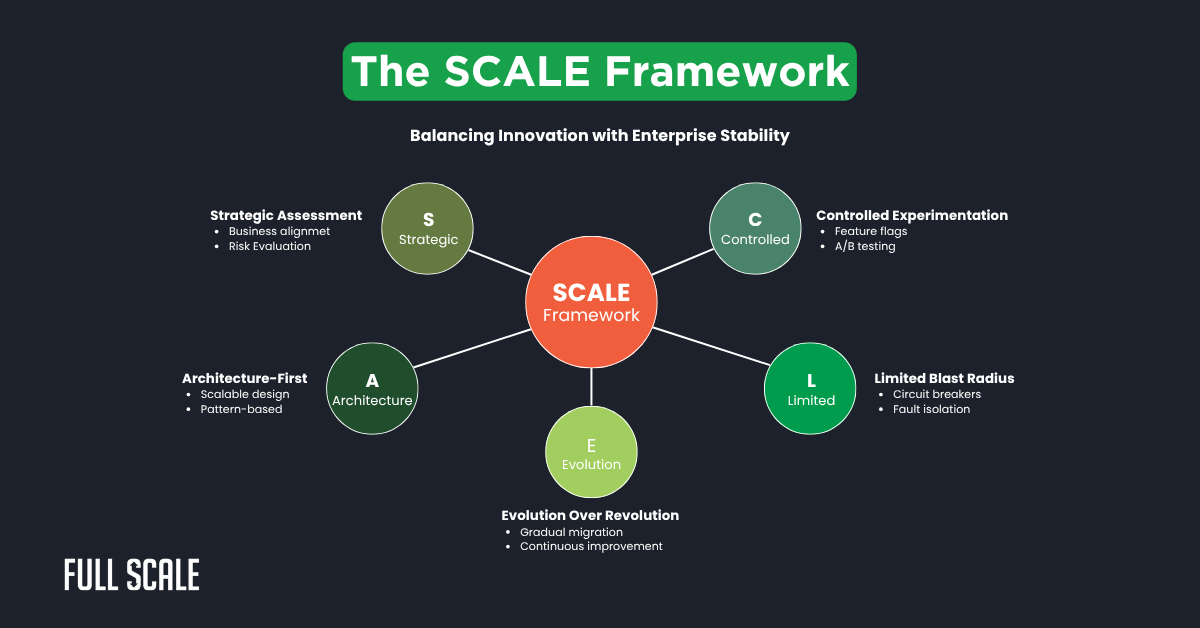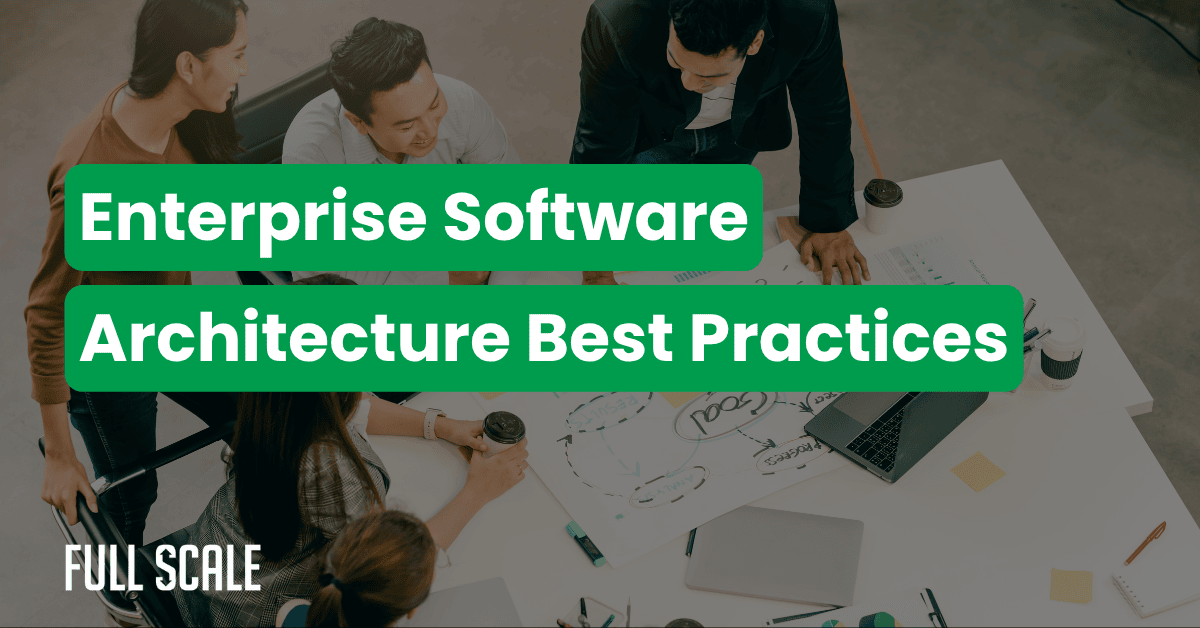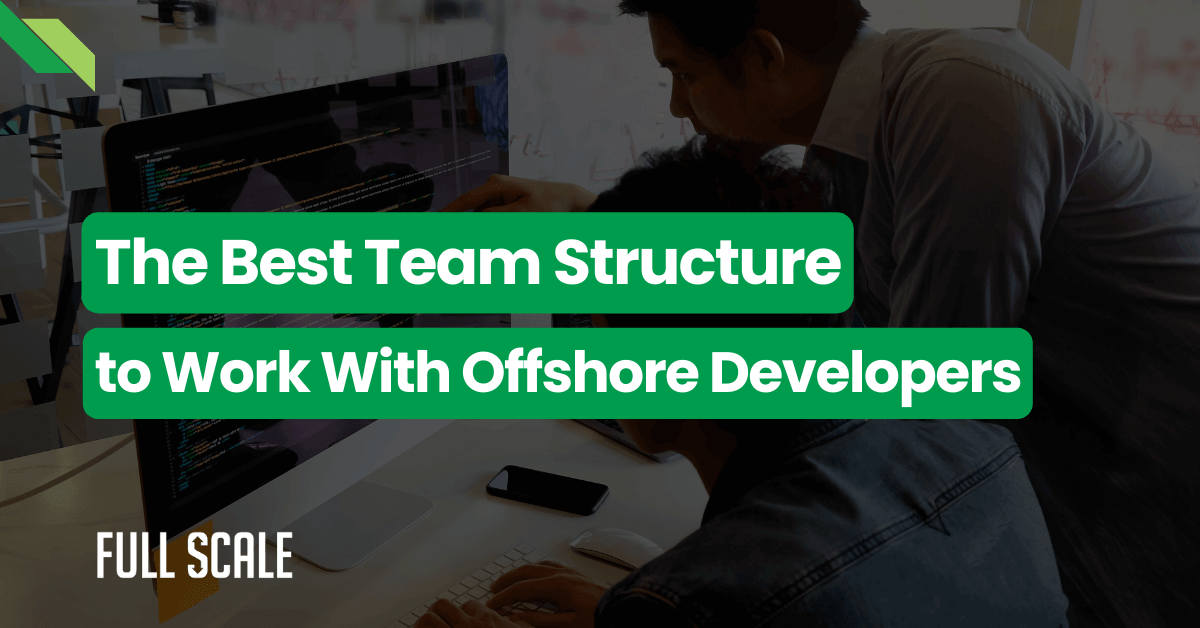Last Updated on 2025-06-26
CTOs face an impossible choice daily. Innovate rapidly or maintain stability? One wrong architectural decision costs millions. According to Gartner, 90% of organizations will suffer from technical debt by 2026, costing them 20-40% of their technology budget annually.
This guide reveals proven enterprise software architecture best practices. Master the SCALE framework and 14 essential patterns for scalable enterprise software architecture. McKinsey reports that companies using modern architecture patterns achieve 60% faster time-to-market.
Enterprise software architecture best practices include modular design, scalability planning, and security-first approaches. Successful architectures balance innovation with stability through controlled experimentation.
The Innovation-Stability Dilemma
Modern enterprises face unprecedented pressure to innovate while maintaining stability. The wrong balance leads to either stagnation or catastrophic failures. This section explores how enterprise software architecture best practices address these core challenges.

This chart illustrates the four zones enterprises navigate between innovation and stability. The optimal path moves from stagnation through controlled risk to the sweet spot. Most successful enterprises follow this trajectory to achieve sustainable growth.
Modern enterprises struggle with competing demands. Innovation drives growth but threatens stability. Enterprise software development requires both elements working in harmony.
Core Challenges CTOs Face
Enterprise technology leaders battle on multiple fronts simultaneously. Resource constraints force difficult trade-offs between maintaining existing systems and pursuing innovation. These challenges compound without proper enterprise software architecture best practices.
- Resource Allocation Battle: 70% stability vs 30% innovation budget splits
- Technical Debt Crisis: Legacy systems consume 80% of IT budgets
- Team Scaling Chaos: Hiring enterprise software developers challenges multiply
- Technology FOMO: New frameworks emerge monthly
- Performance Pressure: Sub-second response times are expected globally
- Security Threats: 43% increase in cyber attacks targeting enterprises
Understanding Enterprise Software Architecture
Enterprise software architecture fundamentally differs from traditional application design. It requires thinking at an organizational scale with multi-year horizons. Understanding enterprise software architecture best practices clarifies these critical distinctions.
Enterprise Architecture vs. Software Architecture
The distinction between enterprise and software architecture often confuses even experienced professionals. Enterprise architecture encompasses entire organizational technology ecosystems. Software architecture focuses on individual application design patterns.
| Aspect | Enterprise Architecture | Software Architecture |
| Scope | Organization-wide systems | Single application |
| Stakeholders | C-suite to developers | Development team |
| Timeline | 3-5 year vision | Project lifecycle |
| Impact | Millions in revenue | Product features |
| Complexity | 100+ integrated systems | 10-20 components |
| Risk Level | Business continuity | Feature delivery |
This comparison highlights why enterprise decisions require different frameworks and approaches. Enterprise architects must balance competing stakeholder needs across multiple business units. Software architects optimize within bounded contexts.
What Makes Enterprise Different?
Enterprise systems operate at scales that fundamentally change architectural requirements. Traditional patterns break down when serving millions of users across continents. Enterprise software architecture best practices address these unique characteristics with specialized approaches.
- Scale: Millions of transactions daily, requiring 99.99% uptime
- Integration: 100+ systems interconnected through various protocols
- Compliance: GDPR, HIPAA, SOX requirements with audit trails
- Performance: Sub-second response globally across all touchpoints
- Legacy Constraints: 20+ year old systems still running critical processes
- Data Volume: Petabytes of data requiring real-time processing
Enterprise Software Architecture Best Practices: The SCALE Framework
The SCALE framework provides structured guidance for balancing innovation with stability. Developed through analyzing successful enterprise transformations, it addresses common pitfalls. This proven approach helps CTOs navigate complex architectural decisions.

Five interconnected components visualize the SCALE framework for enterprise success. Each element builds upon the others, creating a comprehensive approach. Implementation follows a logical progression from assessment through evolution.
This framework solves the innovation-stability dilemma systematically. CTOs worldwide use this approach for implementing enterprise software architecture best practices. Each component addresses specific organizational challenges.
S – Strategic Assessment and Alignment
Strategic assessment forms the foundation of successful enterprise architecture. Without clear business alignment, technical initiatives fail to deliver value. Enterprise software architecture best practices establish priorities and resource allocation strategies.
Align technology investments with business goals using data-driven approaches. The 70-20-10 rule provides proven resource allocation guidance:
- 70% Core Stability: Database maintenance, security patches, compliance updates
- 20% Optimization: Performance tuning, refactoring, technical debt reduction
- 10% Innovation: AI experiments, new technologies, proof of concepts
Financial services companies typically allocate 80% to stability due to regulatory requirements. E-commerce platforms might shift to 60-30-10 for competitive advantage. Context determines optimal allocation.
C – Controlled Experimentation
Innovation without control leads to chaos and system failures. Controlled experimentation validates new approaches while protecting core systems. Enterprise software architecture best practices minimize risk while maximizing learning opportunities.
Validate new technologies and approaches safely through structured processes:
- Feature Flags: Gradual rollout to specific user segments with instant rollback
- A/B Testing: Data-driven decision making with statistical significance
- Canary Deployments: 1% → 10% → 50% → 100% progressive rollout
- Sandbox Environments: Isolated innovation labs for high-risk experiments
- Chaos Engineering: Controlled failure injection to test resilience
- Shadow Testing: Run new systems in parallel to production without impact
A – Architecture-First Foundation
Strong architectural foundations prevent future scaling problems and technical debt. Architecture-first thinking ensures systems can evolve without complete rebuilds. Enterprise software architecture best practices establish patterns and principles for long-term success.
Build scalable enterprise software architecture using proven decision frameworks:
| Decision Factor | Monolith | Microservices |
| Team Size | < 10 devs | > 20 devs |
| Complexity | Simple domain | Complex domain |
| Scaling | Predictable loads | Variable demands |
| Deployment | Weekly releases | Daily updates |
| Data Model | Unified schema | Domain-specific |
| Maintenance | Centralized team | Distributed ownership |
This matrix helps organizations choose appropriate architectural patterns. Netflix successfully migrated from a monolith to microservices as it scaled. Small startups often fail by starting with microservices prematurely.
L – Limited Blast Radius Implementation
Failures are inevitable in complex systems requiring protective measures. Limited blast radius patterns contain failures, preventing system-wide outages. Enterprise software architecture best practices implement safety mechanisms throughout the architecture.
Protect core systems while innovating through isolation patterns:
- Circuit Breakers: Prevent cascade failures by failing fast
- Bulkhead Pattern: Isolate critical resources from experimental features
- Graceful Degradation: Maintain core functionality during partial failures
- Progressive Rollout: Minimize change impact through gradual deployment
- Rate Limiting: Prevent resource exhaustion from traffic spikes
- Timeout Management: Avoid hanging requests blocking resources
Amazon’s retail platform uses these patterns to maintain 99.99% uptime. During Prime Day, non-critical features automatically disable under load. Core shopping functionality remains protected.
E – Evolution Over Revolution
Enterprise systems cannot be replaced overnight without massive risk. Evolution strategies enable gradual transformation while maintaining business continuity. Enterprise software architecture best practices manage long-term architectural improvements systematically.
Transform systems gradually using proven migration patterns:
- Strangler Fig Pattern: Wrap and gradually replace legacy systems
- Continuous Delivery: Small, frequent changes reduce risk
- Technical Debt Management: Allocate 20% capacity for systematic paydown
- Refactoring Strategies: Improve code quality without changing behavior
- Database Evolution: Incremental schema changes with backward compatibility
- API Versioning: Maintain compatibility while adding new capabilities
14 Essential Enterprise Architecture Patterns
Proven patterns solve common enterprise challenges, reducing implementation risk. Each pattern addresses specific architectural problems with tested solutions. Understanding these enterprise software architecture best practices accelerates development while avoiding known pitfalls.
Core Stability Patterns
These seven patterns form the foundation of stable enterprise systems. Every organization should implement these enterprise software architecture best practices regardless of size or industry. They prevent the most common causes of system failures.
- Circuit Breaker: Prevents cascade failures in distributed systems
- Bulkhead: Resource isolation between components
- Retry with Backoff: Handles transient failures gracefully
- Saga Pattern: Manages distributed transactions safely
- CQRS: Separates read/write operations for scalability
- Event Sourcing: Provides complete audit trails
- Database per Service: Ensures data independence
Advanced Enterprise Patterns
Advanced patterns address complex scenarios in mature enterprise environments. These patterns solve integration, migration, and modernization challenges. Implementation requires careful planning and experienced teams.
- Strangler Fig: Enables legacy system migration without disruption
- Anti-Corruption Layer: Maintains clean interfaces with legacy systems
- Gateway Aggregation: Optimizes APIs for client needs
- Feature Toggle: Controls feature rollouts dynamically
- Sidecar: Handles cross-cutting concerns independently
- Backend for Frontend: Provides client-specific API optimization
- Blue-Green Deployment: Achieves zero-downtime deployments
Implementation Roadmap
Successful enterprise transformations follow structured implementation phases. Each phase builds upon previous achievements, creating momentum. This roadmap provides realistic timelines for implementing enterprise software architecture best practices.
Phase 1: Foundation (Months 1-3)
The foundation phase establishes core infrastructure and governance structures. Teams learn new practices while implementing essential stability patterns. Success requires strong leadership support and clear communication.
- Establish a team structure for the enterprise development team scaling
- Deploy core patterns (Circuit Breaker, Retry, Bulkhead)
- Implement enterprise software monitoring solutions
- Create architecture governance and review processes
- Document decisions using Architecture Decision Records
- Train teams on new patterns and practices
Phase 2: Scale (Months 4-6)
Scaling phase addresses performance and reliability at enterprise levels. Advanced patterns enable handling increased loads and complexity. Metrics drive continuous improvement efforts.
- Add CQRS and Event Sourcing patterns for scalability
- Optimize enterprise software performance optimization techniques
- Expand enterprise software testing strategies coverage
- Achieve 99.9% uptime through redundancy
- Implement automated deployment pipelines
- Establish SLAs and error budgets
Phase 3: Transform (Months 7-12)
The transformation phase modernizes legacy systems and enables innovation. Cloud-native patterns provide flexibility and cost optimization. Success metrics shift from technical to business outcomes.
- Begin legacy enterprise software modernization initiatives
- Implement cloud-native enterprise applications patterns
- Deploy advanced patterns (Strangler Fig, Feature Toggle)
- Measure the ROI of enterprise software development projects
- Enable self-service platforms for developers
- Establish innovation labs for emerging technologies
Top 2 Metrics for Success
Metrics drive architectural improvements and justify investments. Both technical and business metrics provide comprehensive success measurement. Enterprise software architecture best practices require regular tracking to enable course correction before problems escalate.
1. Technical Health Metrics
Technical metrics indicate system health and architectural quality. These measurements predict future problems, enabling preventive action. Automated monitoring tools provide real-time visibility.
| Metric | Target | Impact |
| Uptime | 99.95% | Customer trust |
| MTTR | < 15 min | Revenue protection |
| Error Rate | < 0.1% | User satisfaction |
| Response Time | < 200ms | Competitive edge |
| Deployment Frequency | Daily | Innovation speed |
| Lead Time | < 2 hours | Market responsiveness |
These targets represent industry best practices for enterprise systems. Financial services may require higher uptime targets. Startups might accept lower targets for faster innovation.
2. Business Impact Metrics
Business metrics demonstrate architectural value to stakeholders. These measurements connect technical decisions to revenue impact. Regular reporting maintains executive support for initiatives.
- Development Velocity: 40% faster feature delivery through automation
- Cost Reduction: 60% savings with remote enterprise teams
- Technical Debt: Maintain below 5% of development cost
- Innovation Rate: Launch 3x more experiments safely
- Customer Satisfaction: 20% improvement through performance
- Revenue Impact: 15% increase from faster time-to-market
4 Common Pitfalls and Recovery Strategies
Every enterprise encounters architectural challenges requiring corrective action. Early recognition prevents minor issues from becoming major crises. These enterprise software architecture best practices help identify and resolve common problems.
1. The Over-Engineering Trap
Over-engineering wastes resources and increases complexity without adding value. Teams lose sight of business objectives in pursuing technical perfection. Recovery requires refocusing on customer outcomes.
- Signs: 300 microservices serving 50 users, 10+ abstraction layers
- Solution: Consolidate services, remove unnecessary complexity, and focus on value
- Prevention: Start simple, add complexity only when proven necessary
2. Legacy Integration Nightmare
Legacy systems create integration bottlenecks, limiting innovation speed. Old technologies resist modern integration patterns. Strategic approaches enable progress without complete replacement.
- Signs: 80% development time on integration code, frequent data sync failures
- Solution: Implement anti-corruption layers, use event-driven integration
- Prevention: Design for integration from the start, document interfaces clearly
3. Technical Debt Avalanche
Technical debt accumulates silently until it reaches critical mass. Development velocity drops as complexity increases. Systematic debt reduction prevents complete system paralysis.
- Signs: Velocity dropping 10% monthly, bug rates increasing exponentially
- Solution: Dedicate 20% capacity to debt reduction, and refactor high-risk areas
- Prevention: Include debt assessment in the definition of done, and regular refactoring
4. Scalability Crisis
Scalability problems appear suddenly when systems reach capacity limits. Performance degrades rapidly, affecting user experience. Proactive capacity planning prevents emergency situations.
- Signs: System crashes at 2x normal load, response times spike unpredictably
- Solution: Implement horizontal scaling, add caching layers, and optimize databases
- Prevention: Load test regularly, design for 10x current capacity
Future-Proofing Your Architecture
Technology evolution accelerates, requiring adaptable architectures. Future-proofing strategies ensure systems remain relevant through changing requirements. Enterprise software architecture best practices balance current needs with future flexibility.
Enterprise Software Development Trends 2025
Emerging technologies reshape enterprise architecture requirements. Early adoption provides competitive advantages. These trends will dominate enterprise software development.
- AI-Native Architecture: ML models embedded in every service
- Edge Computing: Processing moves closer to data sources
- Quantum-Safe Security: Post-quantum cryptography becomes mandatory
- Serverless Enterprise: Function-based architectures reduce operations
- Green Computing: Energy efficiency drives architectural decisions
- Zero-Trust Security: Perimeter-less security models prevail
Building the Right Culture
Technology alone cannot ensure architectural success. Culture determines how effectively teams implement patterns. These cultural elements enable sustainable enterprise software architecture best practices.
Successful implementation of enterprise software architecture best practices requires a supporting culture:
- Quality-First Engineering: Built-in quality, not bolted-on testing
- Continuous Learning: Regular training on emerging technologies
- Remote Collaboration: Effective distributed team management
- Platform Engineering: Self-service internal developer platforms
- Blameless Post-Mortems: Learning from failures without punishment
- Innovation Time: Dedicated hours for experimentation
Transform Your Enterprise Architecture Today
Enterprise software architecture best practices determine competitive advantage in digital markets. The SCALE framework provides proven guidance for balancing innovation with stability. Implementation requires commitment but delivers measurable business value.
Key takeaways for immediate action:
- Apply the 70-20-10 rule for resource allocation starting next quarter
- Implement core stability patterns within 90 days
- Establish metrics dashboards for continuous monitoring
- Begin legacy modernization with the strangler fig pattern
- Create innovation sandboxes for safe experimentation
Ready to transform your enterprise architecture?
Full Scale’s experienced remote developers specialize in implementing these enterprise software architecture best practices. Our teams integrate seamlessly with your organization, delivering proven results.
Contact Full Scale today to scale your enterprise software development with expert remote teams who understand enterprise complexity.
Book A Discovery Call Now
FAQs: Enterprise Software Architecture Best Practices
What is enterprise software architecture?
Enterprise software architecture is the comprehensive blueprint for an organization’s entire technology ecosystem. It defines how multiple systems, applications, and infrastructure components work together to support business operations.
Key components of enterprise software architecture include:
- Application Architecture: How software applications are structured and integrated
- Data Architecture: Organization and management of enterprise data assets
- Technology Architecture: Infrastructure, platforms, and technical standards
- Integration Architecture: How systems communicate and share information
Enterprise software architecture best practices ensure these components work seamlessly together, supporting scalability, security, and business agility.
What are the 4 main types of enterprise architecture?
The four main types of enterprise architecture work together, creating comprehensive organizational frameworks:
- Business Architecture: Defines organizational structure and processes; Maps business capabilities and value streams; Aligns strategy with execution
- Application Architecture: Manages software applications portfolio; Defines application interactions and dependencies; Guides enterprise software development decisions
- Data Architecture: Establishes data governance and management; Defines data models and flows; Ensures data quality and security
- Technology Architecture: Specifies hardware and software infrastructure; Defines technical standards and platforms; Enables cloud-native enterprise applications
These types implement enterprise software architecture best practices, ensuring cohesive technology strategies.
What are the 5 components of enterprise architecture?
Enterprise architecture consists of five essential components that create a scalable enterprise software architecture:
- Strategic Business Plans: Vision, mission, and objectives; Business drivers and requirements; ROI enterprise software development projects
- Operating Models: Process standardization levels; Integration requirements; Enterprise development team scaling approaches
- Technology Standards: Platform choices and constraints; Enterprise software security best practices; Enterprise software monitoring solutions
- Core Diagrams: System interaction maps; Data flow diagrams; Network architecture blueprints
- IT Governance: Decision rights and accountabilities; Enterprise software development standards; Architecture review processes
These components enable the effective implementation of enterprise software architecture best practices across organizations.
What are the three types of software architecture?
Software architecture encompasses three fundamental types, each serving different purposes within enterprise software architecture best practices:
- Monolithic Architecture: Single deployable unit; Simplified development and testing; Best for small teams and simple domains; Lower operational complexity
- Service-Oriented Architecture (SOA): Reusable services across applications; Standardized communication protocols; Enterprise software integration challenges addressed; Supports legacy enterprise software modernization
- Microservices Architecture: Independent, loosely coupled services; Enables enterprise software development team scaling; Supports DevOps enterprise software development; Facilitates cloud-native enterprise development strategies
Modern enterprise software architecture best practices often combine these types based on specific requirements and constraints.
How can Full Scale help implement enterprise architecture best practices?
Full Scale specializes in helping enterprises implement proven enterprise software architecture best practices through expert remote development teams. Our approach addresses common enterprise challenges:
Our Enterprise Services Include:
- Architecture Assessment: Evaluate current systems against enterprise software architecture best practices
- Team Augmentation: Scale development capacity with experienced architects and developers
- Pattern Implementation: Deploy proven patterns like CQRS, Event Sourcing, and microservices
- Legacy Modernization: Transform legacy systems using the strangler fig and anti-corruption patterns
- DevOps Excellence: Implement CI/CD pipelines and enterprise software deployment automation
Why Choose Full Scale:
- 60% cost reduction compared to local hiring
- Pre-vetted developers experienced in enterprise software development frameworks
- Flexible engagement models for enterprise development team scaling
- Proven track record with enterprise clients
- 24/7 support across time zones

Matt Watson is a serial tech entrepreneur who has started four companies and had a nine-figure exit. He was the founder and CTO of VinSolutions, the #1 CRM software used in today’s automotive industry. He has over twenty years of experience working as a tech CTO and building cutting-edge SaaS solutions.
As the CEO of Full Scale, he has helped over 100 tech companies build their software services and development teams. Full Scale specializes in helping tech companies grow by augmenting their in-house teams with software development talent from the Philippines.
Matt hosts Startup Hustle, a top podcast about entrepreneurship with over 6 million downloads. He has a wealth of knowledge about startups and business from his personal experience and from interviewing hundreds of other entrepreneurs.




